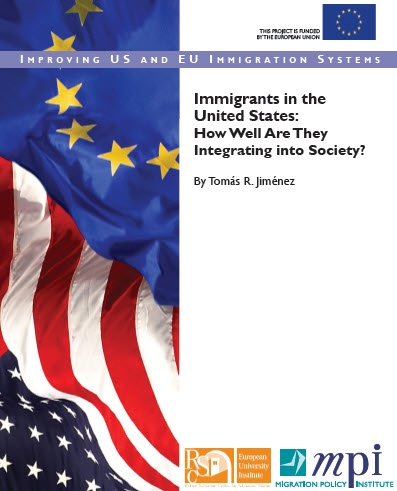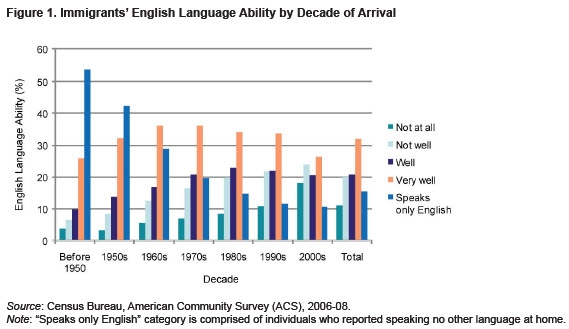The United States is in the midst of its fourth wave of mass immigration, this one characterized by newcomers from Latin America, Asia, and the Caribbean. Even though immigration is a prominent part of the country’s DNA, fears about immigrants’ ability to integrate have accompanied each new immigration influx, and the current one has been no exception.

Integration is not necessarily as smooth process. It entails uncomfortable adjustments among immigrants their descendants, and the host society in which they settle. However, just as previous waves of immigrants eventually found their way into the mainstream of American life (even those who were initially considered “unassimilable”), the recent inflow of immigrants is integrating reasonable well according to five main indicators: language proficiency, socioeconomic attainment, political participation, residential locate, and social interaction with host communities. Indeed, there is evidence to suggest that US immigrants are learning the English language faster now than in the last wave of mass immigration at the beginning of the 20th century.
Progress among the United States’ different immigrant groups is highly uneven, however. Latinos are not faring as well as those with Asian, black, and non-Hispanic white immigrant backgrounds. Residential segregation in the first generation is higher among Latinos than among Asians, for example, and this gap persists into the second generation. Latinos experience very rapid improvement according to several measures of social and economic integration across generations, but their progress has often not been sufficient to enable even third-and higher-generations Latinos to catch up their non-Hispanic white counterparts. Latino citizens also have relatively low rates of voter registration and voting.
In other words, immigrant integration in the United States is proceeding steadily, but unevenly. Remarkably, the process has unfolded almost entirely without the help of policy intervention. One of the factors likely to remain a powerful barrier to social cohesion and full social, economic, and political integration is the size of the United States’ unauthorized population, nearly one-third of the foreign-born population. Being unauthorized hampers the integration of both immigrants and their US-born children.
The report indicates that the pace of integration varies depending on the origin of immigrants and the places in which they settle, the master trend today looks strikingly similar to patterns of integration among the major wave of European immigration to the United States that took place a century ago.

The report also looks at language and notes that among first-generation immigrants, rates of English language fluency are uneven. Immigrants from Latin America have the highest proportion of Limited English Proficient (LEP) individuals (64.7 percent), followed by immigrants from Asia (46.6 percent), and Europe (29.8 percent). It is partly because of this fact that the descendants of Latin American immigrants maintain Spanish –language use alongside English language use more than immigrants from other regions of the world.

Still, the shift to English among today’s immigrants and their descendants is unquestionable taking place. The more time that immigrants have spent in the United States, the more likely they are to speak English. In fact, immigrants today are learning English faster than the larger waves of immigrants who came to the United States during the turn of the last century.
During their first 20 years in the United Sates, the more recent arrivals, including those from Spanish-dominant countries, also learned English faster than immigrants from the first two decades of the 20th century.
The proportion who speak only English or who speak English very well jumps to more than 80 percent by the second generation for all groups, By the third and higher generations, close to everyone, regardless of ethnoracial group, reports speaking only English or English very well.
For example, among people of Mexican ancestry in Los Angeles who are 25 years of age and older, roughly 25 percent of the second generation prefers to speak Spanish at home, while only 4 percent of the third generation and 3 percent of the fourth generation express the same preference.
Source: Migration Policy Institute, “Immigrants in the United States: How well are they integrating into society?” May 2011.